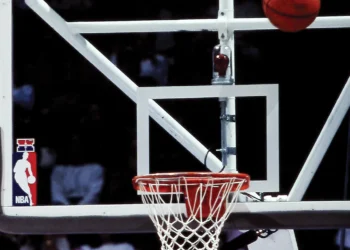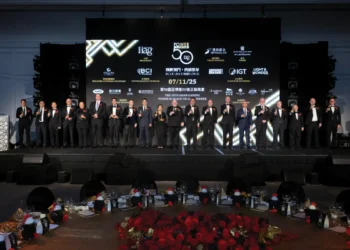Caesars has a novel plan for rescuing its largest and most indebted subsidiary from a sea of red ink more than $18 billion deep. But creditors are skeptical, lawsuits are flying, and time is running out
Caesars Entertainment has spent the last seven years trying to grow, sell, mortgage, cut and restructure its way out of the consequences of a leveraged buyout that took the world’s biggest casino operator private and saddled it on the eve of the Great Recession with more than US$30 billion of debt. It won’t get another seven. The New Year is unfolding amid the possibility that the company may have only weeks to fend off its many creditors and restore itself to financial health on its own terms.
Caesars, which owns, operates or holds an interest in 50 casinos in 14 US states and five foreign countries and employs 68,000, hasn’t seen an annual profit since 2009, and its debt service guarantees that as currently structured it never will. The face value of the debt stood at $25.4 billion at the end of the third quarter. Most of it, $18.4 billion, is held by the subsidiary known as Caesars Entertainment Operating Co., which directly owns or manages 38 of the casinos. Given the leverage and the fact that CEOC’s fate is bound up with mostly stagnant US regional markets, its survival past this year, absent new financing, in Caesars’ own words, is a matter of “substantial doubt”.

Negotiations have been ongoing and intense since last summer with holders of the company’s bank loans and first-lien bonds to reach agreement on a court-supervised reorganization of CEOC, a pre-packaged bankruptcy, as it’s known. The latest iteration proposes to take the unit into the protection of Chapter 11 of the US Bankruptcy Code and quickly lead it out again on more or less amicable terms as a partner in a newly minted real estate investment trust with its debt load shaved by more than half.
Caesars’ management and its private-equity owners, TPG Capital and Apollo Global Management, want this to happen between the 15th and 20th of this month. The timing is significant because a sizable number of second-tier creditors are not happy about where all this is going and are suing to put CEOC in receivership. A Chapter 11 filing would automatically halt their claims.
Caesars also is working against a 30-day grace period to make good on a $225 million interest payment owed a number of these same lenders. The payment was due in mid-December. Caesars skipped it and come mid-January is officially in default.
The pre-packaged plan would compensate first-in-line creditors with cash, securities and equity in the REIT structure that would require them to exchange their $18.4 billion for $8.6 billion of new debt. Five lenders were said to be in agreement, representing 39% of the senior obligations, according to a company filing with the US Securities and Exchange Commission. Reporting on Christmas Eve, Bloomberg said 60% were needed by 5th January for the plan to go forward. Caesars said the 9th is the operative date. However, several major creditors—holders of both bank loans and first-lien bonds— have quit the talks, and by doing so are free to trade the debt. The measure of their dissatisfaction was apparent when the bank lenders, who presumably are to be made 100% whole in the deal, posted the company’s previously confidential proposals online.
The question for Caesars was whether to proceed into Chapter 11 without their blessing, a perilous course in all likelihood, one whose outcome no one can predict.
Analysts are divided. Some say the REIT structure sets Caesars firmly on the road to profitability. Others argue that any consensus with so many lenders involved isn’t practicable and the issues will languish in Bankruptcy Court indefinitely, mired in endless objections.
“That’s the amazing thing about it,” a New York portfolio manager familiar with the talks said. “If you put 20 managers and analysts in aroom, you’re going to get 20 different opinions on Caesars.”
Either way, the clock is ticking.

A QUESTION OF BALANCE
It has to be believed that Caesars still wields the upper hand in these negotiations by virtue of the logic that gave birth to it: it’s too big to fail. For while creditors farther back in the queue may see a breakup of the company as their best shot at a recovery, the last thing institutional investors want is to be custodians of a couple dozen drive-up gambling houses in places like Joliet, Illinois, and Council Bluffs, Iowa, and Tunica, Mississippi.
The US regional casino environment where Caesars is so heavily invested is “fundamentally weak,” as investment brokerage Union Gaming Research put it last September, and has been ever since the recession technically ended. Commercial and tribal casinos combined produced $66.3 billion in gaming revenue in 2013, which was a record, but it was only 1.6% better than 2012, despite the fact that six states opened new casinos or expanded their offerings. Same-store results nationwide were down 3.1%. Since the worst of the downturn, five new states have added casinos, five have added racetrack slots and more than 20 new tribal venues have opened, and over this time, gaming revenue has grown an average of 1.46% a year. Through September, only three of 15 commercial markets tracked by Union Gaming showed year-on-year growth, and all three had new openings to credit it to. Overall, Moody’s Investors Service rates the US gaming industry’s prospects as “negative” for at least the next 12 to 18 months and believes annual revenue collectively could actually decline over this time.

Caesars has responded by selling or closing five casinos. But the risks inherent in its capital structure were apparent long before the downsizing began. In fact, within two years of engineering that structure, Apollo and TPG were working to dismantle it, and in 2012, Caesars was led back to the public markets and rejiggered as a holding entity (Nasdaq: CZR) for what would be three discrete asset portfolios:
Five Las Vegas casinos, four of them on the Strip, together with Harrah’s Atlantic City were shunted into Caesars Entertainment Resort Properties with a refinanced debt load of $4.7 billion. Planet Hollywood in Las Vegas, CZR’s current 41% stake in Horseshoe Baltimore, the online and mobile business known as Caesars Interactive Entertainment and the World Series of Poker brand were reorganized as Caesars Growth Partners and spun off as a second public company, Caesars Acquisition (Nasdaq: CACQ), majority owned by CZR, Apollo and TPG. Caesars Growth Partners’ debt stands currently at around $2.3 billion, and in May of last year, in a move that really riles creditors, CEOC sold Harrah’s New Orleans, Bally’s Las Vegas and the two newest Strip casinos, the remodeled and rebranded Cromwell and the LINQ Hotel & Casino, to Growth Partners, thus leaving CEOC with only one Las Vegas asset, Caesars Palace, which CZR is now proposing to break off as its own REIT and remortgage to support the CEOC restructuring.
Caesars, it turned out, was also too big to succeed.

What remains to its largest unit, Caesars Entertainment Operating Co., is a disparate collection of commercial casinos in 20 regional markets together with the former London Clubs International estate of eight UK casinos and a casino in South Africa. The company has management contracts with casinos owned by Indian tribes in three states, investments and operating deals with two casinos and a racino in Ohio, a casino it runs in Windsor, Ontario, two in Cairo inherited from LCI, and a piece of a casino in Uruguay. This agglomeration generates the majority of parent CZR’s revenues, 61.7% of them, according to the latest available results, down 13% year on year through the first nine months of 2014. CEOC improved its perennial operating loss by more than 60% over this period, but its debt service over the next 12 months will exceed $1.8 billion. The corporation as a whole posted a net loss through 30th September of $1.79 billion after interest payments of $1.95 billion and was looking at forking over another $737.9 million for debt service before the year was out. Arrayed against these obligations was possibly $1.8 billion or so in property EBITDA for the entire year.

CZR is looking at more than $2.4 billion in interest payments in 2015, with CEOC, its largest subsidiary, in negative operating cash flow to the tune of $548 million. In 2016, some $1.28 billion of debt is scheduled to mature, $1.22 billion of it belonging to CEOC. This balloons to $7.3 billion in 2017, 99% of it CEOC’s. In 2018, $5.24 billion comes due.
PLAYING FOR KEEPS
Analyst Chad Beynon of Macquarie Securities, speaking recently to The Press of Atlantic City, called the CEOC restructuring the most complex “that has ever gone on in the gaming world”.
Actually, the model was laid out more than a year ago by Penn National Gaming, a listed regional operator (Nasdaq: PENN) with 19 casinos in 12 US states. In November 2013, PENN announced it was spinning off its considerable landholdings as a separate company, Gaming & Leisure Properties Inc., which would trade on Nasdaq as a real estate investment trust. With the completion of the deal early in 2014, GLPI became the landlord for PENN’s casinos, their fixed rents serving as the principal source of GLPI’s income. PENN was out of the property business, which allows it to focus on maximizing operating revenues, and the acquisition, financing and disposition of all that property was vested in a highly liquid subsidiary that can do so at much higher profit margins and generally with cheaper access to capital.
What CZR proposes for Caesars Entertainment Operating Co. is almost identical.
Of course, real estate investment trusts are nothing new, and there are several types of them. Basically, to qualify, a company must incorporate as a REIT, must hold at least 75% of its assets in real estate, must derive at least 75% of its gross income from real estate and must return 90% of its income to shareholders in the form of dividends. In exchange, the REIT pays no tax on its profits.
GLPI defines its strategy as one of “aggressively pursuing opportunities to acquire additional gaming facilities to lease to gaming operators, which may include Penn, and also anticipates diversifying its portfolio over time, including by acquiring properties outside the gaming industry to lease to third parties”.
After a year in operation, the company has a market cap nearly three times as large as its parent and trades at more than twice PENN’s multiple on an EV/EBITDA basis.
“Overall, we see the GLPI spin-off as a positive for the industry,” says Fitch Ratings Service.
Not surprisingly, others are exploring the possibilities, among them, Boyd Gaming Corp. (NYSE: BYD), which operates 21 casinos in eight states, and Pinnacle Entertainment (NYSE: PNK), which recently announced plans to separately list the land under its 14 casinos.
“As with PENN’s strategic rationale, PNK sees the separation as a means to a lower weighted average cost of capital, a platform to engage in M&A/consolidation of a maturing industry and other industries, and return its free cash flow to equity holders in a tax efficient way,” says J.P. Morgan.
Fitch, which is in the business of valuing corporate debt, sees a lot of synergies: “The entrance of REITs into the gaming sector will potentially drive up trading EV/EBITDA multiples, provide new sources of capital (e.g. sales and lease-backs), create better transparency on the value of physical casino assets and the gaming licenses and possibly increase tolerance for higher leverage.”
They could be “especially enticing,” the firm suggests, for “highly leveraged gaming companies looking to de-lever and/or raise liquidity”—which obviously explains the attraction of the model for Caesars and, it hopes, to the many people to whom it owes money. By Caesars’ calculation, breaking up CEOC would slash the unit’s annual interest expense by approximately 75%, from $1.7 billion to around $450 million. The key, of course, is selling senior lenders on the future value of CEOC’s massive property holdings, most of which they will likely own under a structure that is potentially more profitable—certainly more liquid, as the Penn National de-merger would appear to show—than the thousands of slot machines and blackjack tables that sit on them.
The snag, of course, is the debt, and to sweeten the deal, in addition to offering up Caesars Palace, CZR will kick in $1.45 billion, roughly the total of its current cash and cash equivalents, and will guarantee CEOC’s lease payments to the new REIT. It also will provide first-lien noteholders with additional equity in the REIT through a secondary rights offering that pays them a fee if they agree to underwrite it.
Whether this would be enough remained to be seen as 2014 drew to a close, and late in December, the corporate brain trust proposed yet another controversial transfer of assets—this one will see Caesars Acquisition re-merge with CZR in an all-stock deal that ends the former’s existence as an independently traded company and returns its six casinos, including the newest Las Vegas Strip properties and Caesars Interactive, to the corporate fold. But this looked almost certain to be contested in the courts as it requires CACQ shareholders to swap their holdings at a significant discount to the stock’s current price and, more pointedly, to its projected future value.
Holders of the company’s subsidiary debt haven’t been included in the REIT talks, and they’re far from happy with all the financial legerdemain that created CEOC in the first place—“looting” is what some of them call it, and they want it reversed. Their claims are included in a lawsuit filed in the US state of Delaware by a trustee of second-lien bondholders owed more than $3 billion. It’s one of two suits challenging the 2012-2014 asset transfers.
The trustee’s action accuses the company of engineering a “good Caesars” with lower debt and valuable assets and the “bad Caesars” destined for Chapter 11.
The second case was filed by senior bondholders led by hedge fund giant Elliott Management Corp. The creditors in that case want a judge to appoint a receiver for CEOC.

Caesars denies any wrongdoing and claims the transfers were allowed under its debt contracts. The company, moreover, accuses its adversaries of maneuvering to improve their bargaining positions and says that derivatives held by some of them will pay “handsomely” if their claims force CEOC into default. Caesars has filed its own action in a New York court seeking validation of the transfers and a ruling that would prevent bondholders from filing notices of default. In its case the company singles out Elliott for possessing the derivatives— credit default swaps, as they’re called—which create “a blatant conflict of interest” and incentivize the fund, so Caesars claims, to trigger a default. “Elliott’s scheme is all the more troubling,” Caesars says in its filing, because the fund sits on the International Swaps & Derivatives Association committee that determines whether a company has indeed defaulted.
Elliott could be the key to what happens in the weeks ahead because as the owner of 30% of a class of senior Caesars bonds it holds what is known as a “blocking position” in regard to any deal.
As for the swaps, Elliott bought them before entering negotiations with Caesars in September and has continued to purchase them, according to Bloomberg sources. The firm denies Caesars’ allegations, calling them a “red herring,” and has filed its own motion to dismiss.
Credit default swaps, famously criticized by Warren Buffett during the global financial crisis as “weapons of mass destruction,” are valued by bondholders as protection against losses or as a way to double down on a company’s creditworthiness. The contracts pay the buyer face value if a borrower fails to meet its obligations, less the value of the defaulted debt, resulting in some instances in creditors profiting more from a swaps payout than an issuer actually meeting its obligations.
“In situations where credit-default swaps play a meaningful part of the case, you don’t realize the strange impact they have on the process,” said David Kurtz, global head of restructuring at Lazard, speaking at a recent debt conference in New York. “What you find is that you don’t really know the motivation of the holder of the debt.”
But then Apollo is known for playing its own brand of hard ball, and it appears there is no love lost between the two firms. As Bloomberg described it in its Christmas Eve coverage, citing anonymous sources, “So great was the ill will between them that when Apollo held a pivotal negotiating session at its office in Manhattan, it didn’t invite Elliott.”
“We will aggressively go out and protect our investments using all the tools available to us to be able to do so,” a partner in Apollo’s buyout unit said.
Bloomberg says it’s why lenders that help Apollo finance corporate takeovers have begun asking for extra returns on their money—an “Apollo premium,” they call it—because of the likelihood the deals will result in costly litigation.
“This is how they operate,” a senior executive with AllianceBernstein, a New York-based asset management firm, told the news agency. Most buyout houses “don’t want to be perceived as having an adversarial relationship with bondholders,” he said. “Whereas with Apollo, that’s kind of their modus operandi.”
































